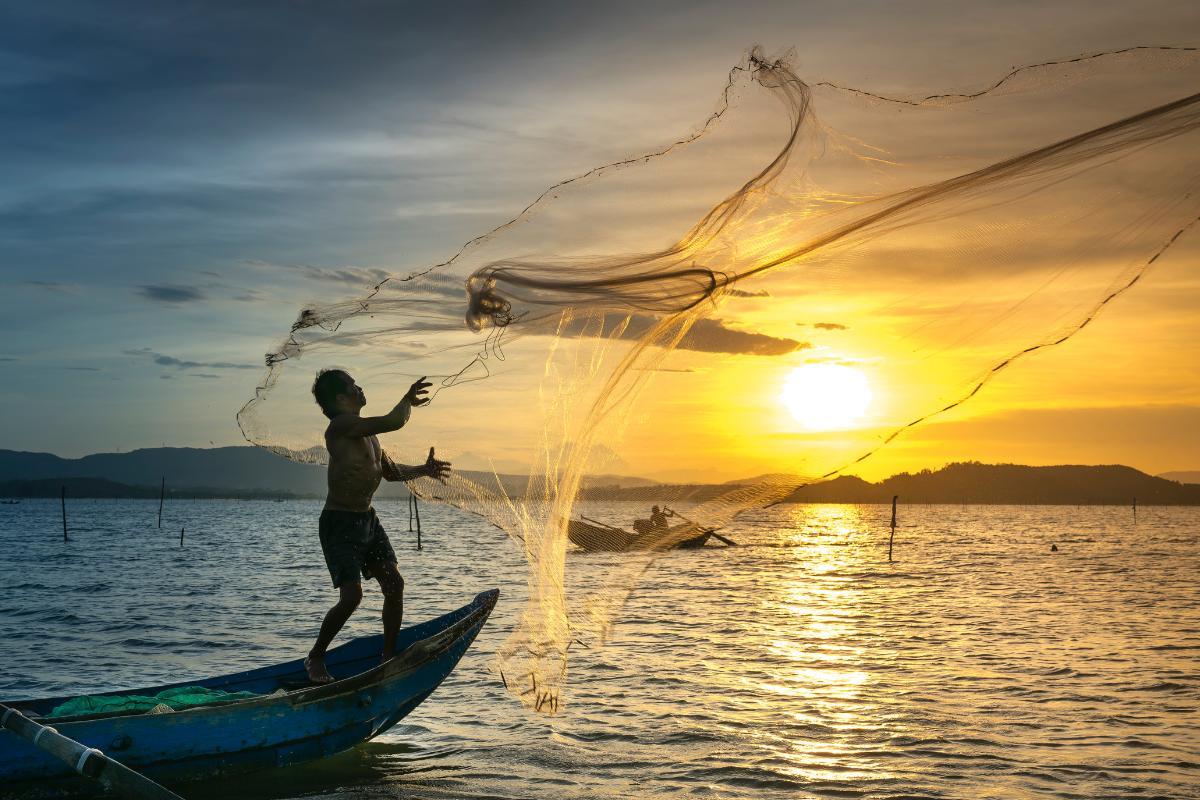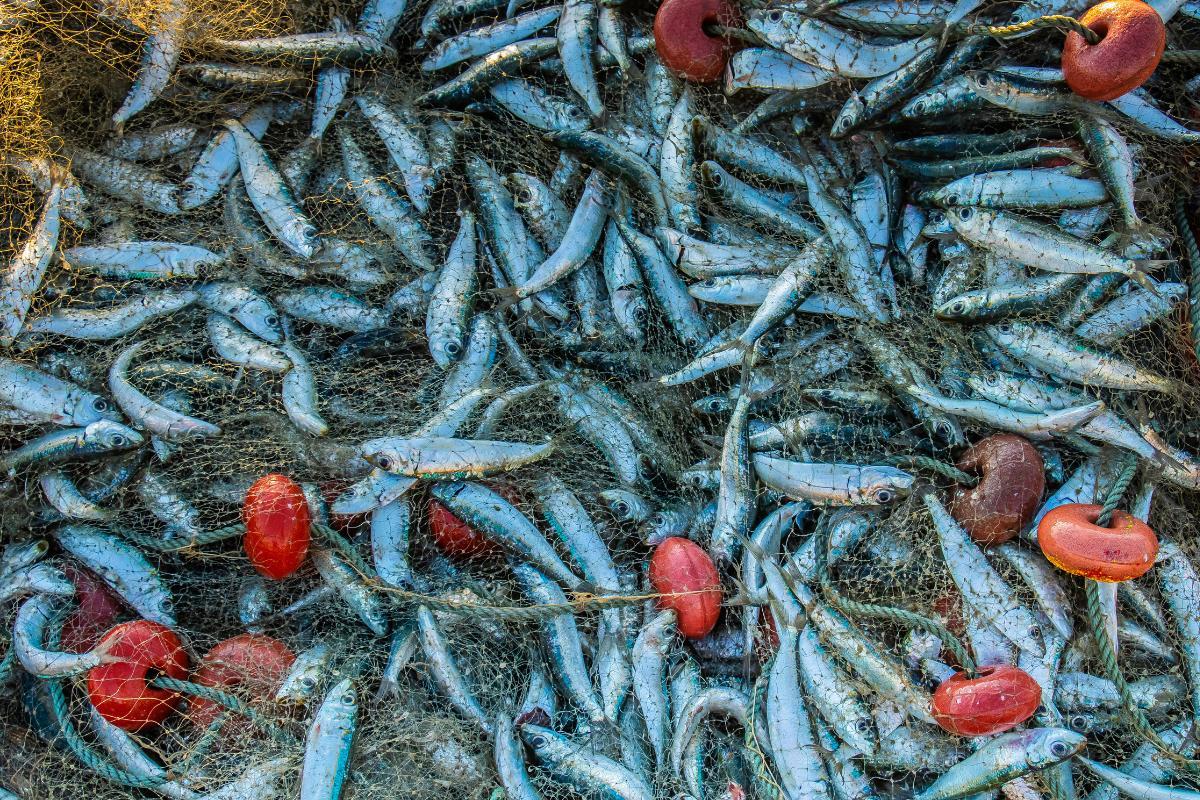Why Is Sustainable Fishing Important?


For millennia, humanity has cast its nets into the ocean's bounty. Early fishing practices were small-scale and focused on meeting immediate needs. However, with population growth and technological advancements, the impact on fish stocks became increasingly evident. In this sense, the Industrial Revolution marked a significant shift. Powerful engines and advanced nets dramatically increased catches, exceeding the natural ability of fish populations to replenish until it became unsustainable.
In the following article by thedailyECO delves into the concept and importance of sustainable fishing, exploring its benefits, various practices, and the potential consequences of inaction.
What is sustainable fishing?
Sustainable fishing isn't just about catching fish, but about managing and protecting this valuable resource responsibly. This approach prevents overexploitation, allowing fish populations to reproduce and ensuring their continued existence for future generations. It's a win-win situation, promoting economic development for coastal countries and improving the livelihoods of fishing communities.
The urgency for sustainable practices is undeniable. Over a third of global fisheries are already depleted, while seafood demand continues to rise. Sustainable fishing offers a solution, reversing this decline and ensuring there are enough fish in the sea for long-term fishing. It is not about economic benefits, but about securing a vital source of protein for a growing global population.
So, how does sustainable fishing achieve this balance? At its core, it avoids overfishing by setting catch limits based on scientific assessments of fish populations. Sustainable practices also extend to minimizing harm to the marine environment. This includes using selective fishing gear that reduces unwanted bycatch, protecting sensitive habitats, and minimizing pollution from fishing activities. Ultimately, sustainable fishing aims to ensure the continued health of fish stocks, which is vital for the long-term viability of the fishing industry itself.
Learn how shoaling helps fish survive predators and navigate the vast ocean in our other article on this intriguing phenomenon.

What is overfishing?
Overfishing occurs when fish are caught at a rate that exceeds their natural ability to reproduce and replenish their populations.
This practice leads to a decline in fish stocks, which can result in the depletion of species and the collapse of fisheries. Overfishing can have severe ecological, economic, and social impacts, disrupting marine ecosystems and affecting communities that rely on fishing for their livelihood. Let us explore some of them:
- Fish are caught faster than they can reproduce, leading to reduced populations and potential species collapse.
- The unintentional capture of non-target species, which often includes endangered species, juvenile fish, and other marine life.
- Techniques such as bottom trawling that destroy habitats crucial for the survival of various marine species.
- Fish populations become critically low, making recovery difficult and threatening the sustainability of fisheries.
- The decline in fish populations affects the entire marine ecosystem, leading to a loss of biodiversity and ecosystem imbalance.
- Communities dependent on fishing face economic hardship and food insecurity due to declining fish stocks.
In this sense, sustainable fishing practices aim to manage and protect fish populations and marine ecosystems to ensure that fishing activities can be maintained long-term without depleting resources.
Therefore, overfishing and sustainable fishing represent two contrasting approaches to the use of marine resources. Overfishing depletes fish stocks and harms ecosystems, whereas sustainable fishing promotes the long-term health and productivity of both fish populations and the marine environment. By understanding and implementing sustainable fishing practices, we can protect marine biodiversity, support fishing communities, and ensure that future generations can continue to benefit from the world's oceans.
Benefits of sustainable fishing
Sustainable fishing offers a multitude of benefits that encompass the environment and the economy. To begin, sustainable fishing practices align with the reproductive rates of fish to maintain healthy marine ecosystems and ensure the survival of vulnerable species. Also, by limiting destructive fishing practices, sustainable methods help conserve sensitive marine habitats like coral reefs and spawning grounds.
By employing alternative methods to conventional fishing, sustainable fishing avoids the indiscriminate and accidental capture of threatened species or those without commercial value, protecting vulnerable species and promoting biodiversity.
Fish and seafood have a significantly lower carbon footprint compared to other sources of animal protein. For instance, only about 2% of the CO2 emitted to produce a kilo of red meat is emitted to catch a kilo of fish.
In sustainable fishing, all parts of the catch are utilized. For example, dead fish are used to make fish meal, minimizing waste and promoting resource efficiency. In this sense, sustainable fishing generates less waste, minimizes energy consumption, and reduces the use of harmful chemicals, contributing to a cleaner and healthier environment.
Sustainable fishing supports the establishment of Marine Protected Areas (MPAs), where fishing activities are regulated. MPAs help conserve critical habitats, protect endangered species, and provide safe spaces for fish to reproduce. These areas also increase fish biomass, benefiting adjacent fisheries and promoting overall marine health.
Artisanal fishing creates numerous local jobs, particularly in rural communities where fishing is a primary source of income. It supports local economies and can boost foreign currency income through the export of fish and other marine products. Furthermore, healthy fish populations translate to stable catches and a reliable source of income for fishing communities. Sustainable management can even lead to increased seafood production in the long run, benefiting fisheries and economies.
Dive into the world of aquaculture in our follow-up article and explore its role in sustainable fishing practices.
Types of sustainable fishing
Sustainable fishing isn't a one-size-fits-all approach. On the contrary, it is a toolbox of techniques combined with responsible management. Here's a glimpse into some popular methods and the strategies that ensure their sustainability:
Fishing techniques:
- Hook and line: this classic method uses a rod, line, and baited hook. Its precision allows anglers to target specific species, minimizing bycatch.
- Speargun fishing: for skilled divers, spearfishing offers a targeted approach with minimal waste.
- Pots and traps: these enclosed structures attract targeted catches like crustaceans and shellfish, allowing unwanted creatures to escape.
- Longline fishing: longlines, featuring a main line with multiple hooks, can be efficient for catching pelagic fish (think tuna, swordfish). However, responsible management is crucial to minimize bycatch of vulnerable species.
Management strategies:
- Catch limits: scientific assessments determine the number of fish that can be safely caught (quotas) to prevent overfishing.
- Seasonal closures: restricting fishing during spawning seasons allows fish populations to reproduce unhindered.
- Marine Protected Areas (MPAs): these designated havens allow fish stocks to replenish, benefiting surrounding fisheries.
Sustainability hinges on proper implementation and regulations. While these methods have the potential to be eco-friendly, ongoing monitoring and responsible management are crucial for their success.
Delve deeper into the issue of plastic pollution in our follow-up article and discover its impact on marine life and sustainable fishing practices.

If you want to read similar articles to Why Is Sustainable Fishing Important?, we recommend you visit our Environment (other) category.
- Galarza, E., & Kámiche Zegarra, JN (2014). Artisanal fishing: an opportunity for development.
- Galli, O. (2007). Sustainable fishing and food sovereignty. Political ecology (32), 21-30.
- Marine Stewardship Council. MSC Perspectives. Sustainable fishing, increased fishing yield and global food supply. Available at: https://www.msc.org/docs/default-source/es-files/notas-de-prensa-completes/msc_insights_espanol.pdf







